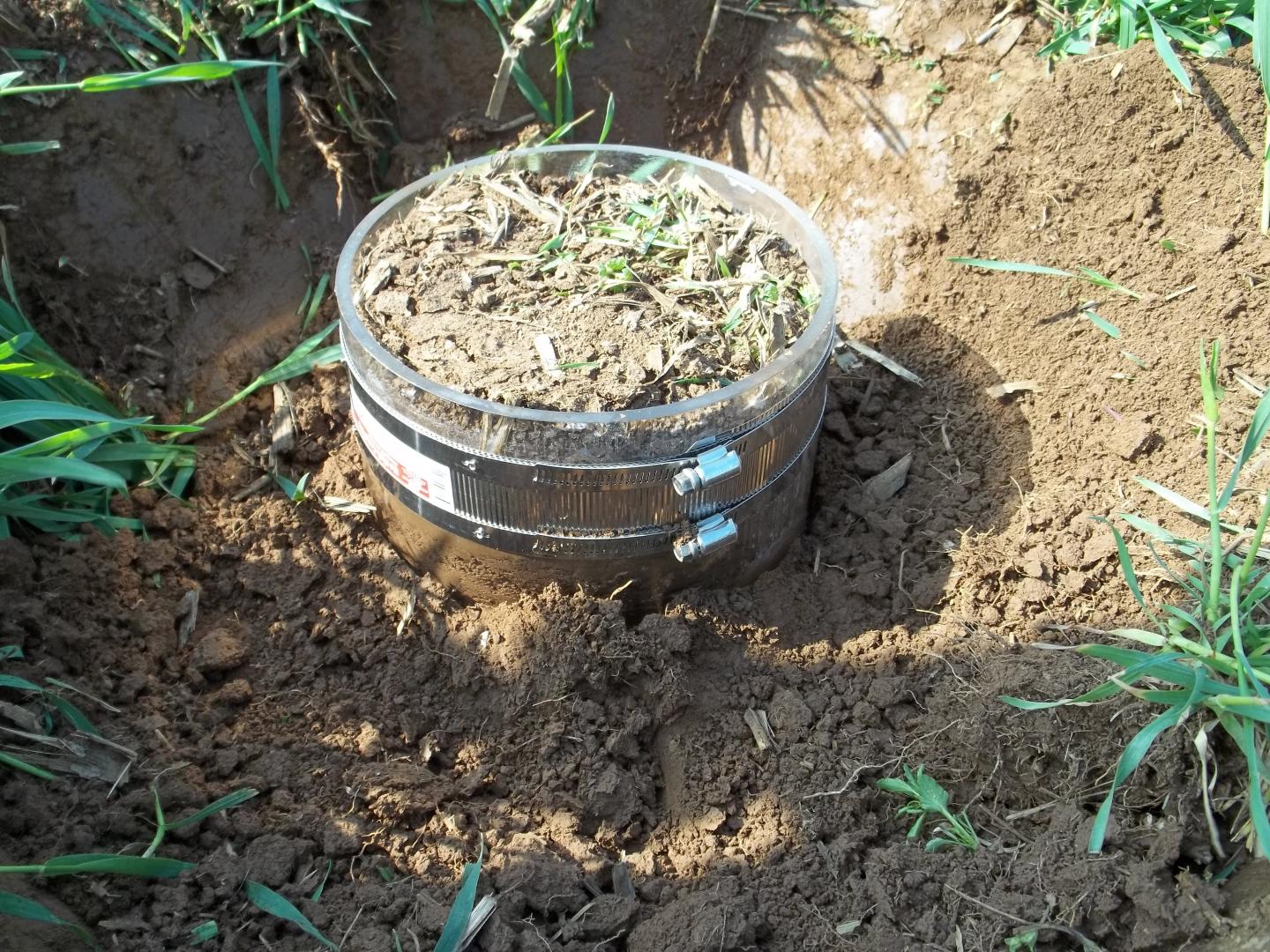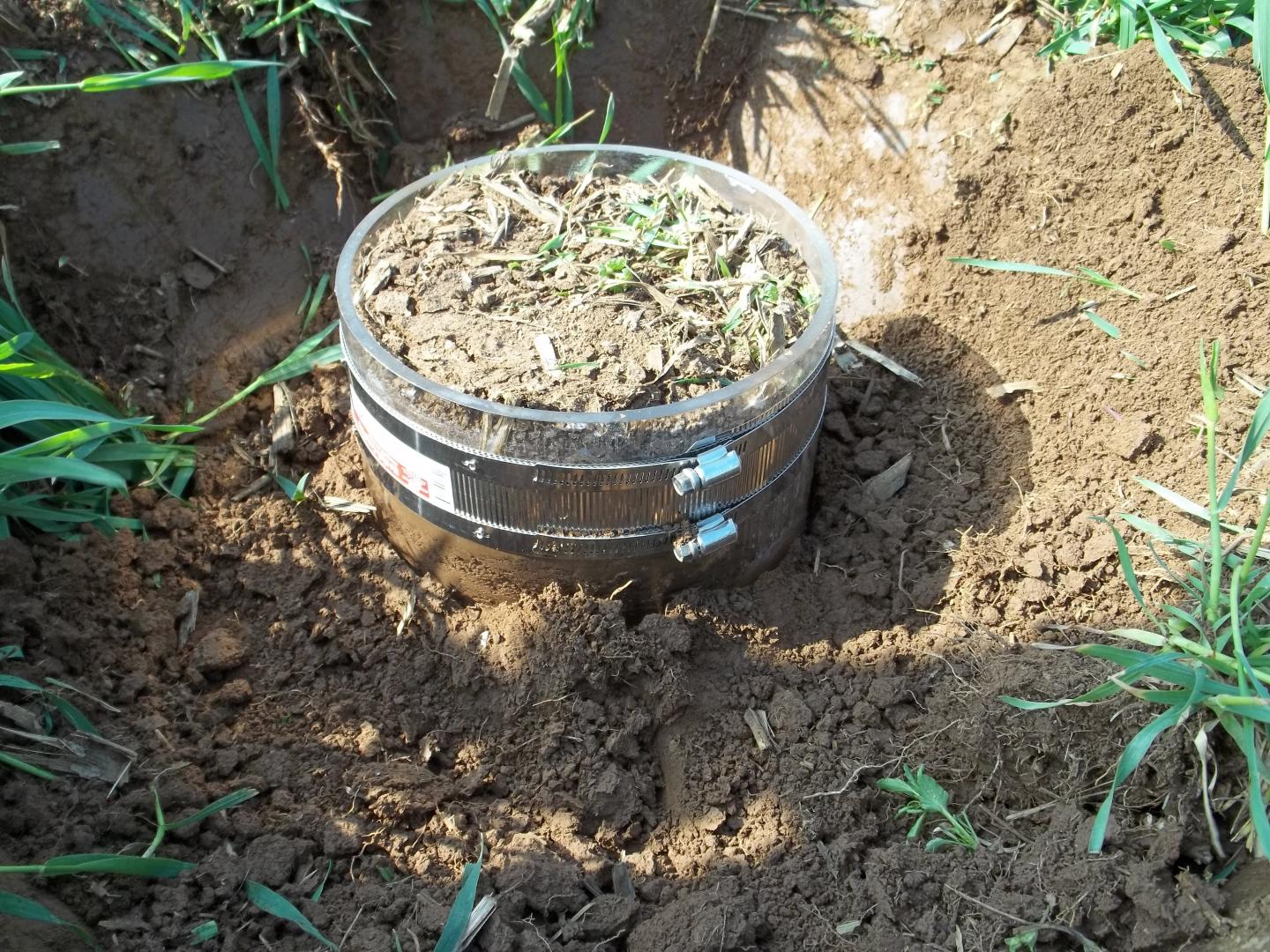
Credit: Ole Wendroth.
Soil isn't one size fits all. It may look the same under your feet – but under a microscope, that's a different story. A plant's roots, tiny bugs – these things can tell one soil from another quite easily.
Soil scientists typically measure different aspects of soil — how much air it contains, how well it retains water, heat, and more — to determine if it is best for a specific purpose. These are called soil physical properties.
And, when it comes to building on or growing in soil, it's important to know its many physical properties. Does water flow through the soil or run right over the surface? Quickly or slowly? How much water and air can it provide? How hard is it for roots and farm equipment to get through?
Soil sustains crops, forests, animal production, urban development, and even projects like building silos, dams, and greenhouses. Robson Armindo, a professor at the Federal University of Paraná in Brazil, wanted to better understand the interactions of soil, air, and water. He worked with Ole Wendroth from the University of Kentucky.
"Having a questioning personality, it was hard for me to use a generic soil physical quality index without knowing its origin and process," Armindo says. "This sparked my curiosity to evaluate many other factors in an analysis."
For crop production, Armindo defines soil quality as the ability of a given soil to give a plant everything it needs to grow the best it can. A successful crop depends on a good soil match.
"For example, under conditions of highly irrigated vegetable production, the best soil type may be a sandy soil rather than a clay one," he says. "The user should consider the purpose, crop type, and climate to classify whether the soil has adequate physical qualities or not."
But what makes a soil high quality? Soil structure can change depending on the crop, climate, and land use in question. In addition, soils differ greatly over space and time. This variability makes it difficult.
Armindo and Wendroth combined this information in mathematical equations. They tested their theory across different soils in Germany, Brazil, and the United States and found it successful.
Their method for assessing soil physical quality can be carried out on any soil. For example, it would be useful for understanding if a certain soil would serve as a strong foundation for a building or field of crops. Assessing soil physical quality can save time and money. It can help steer away from soils that wouldn't help crops grow their best.
"By using the information from these equations, a person may decide how to use a particular soil," Armindo explains. "Once the agronomist or land manager has access to this information, in addition to other physical, chemical, and biological properties, he or she can make a decision about the soil's best use and management."
Read more about Armindo's research in Soil Society of America Journal. Funding for this research was provided by the U.S. National Institute of Food and Agriculture and the State of Kentucky as well as the Brazilian Coordination for the Improvement of Higher Education Personnel (CAPES).
###
Media Contact
Susan Fisk
[email protected]
608-273-8091
@ASA_CSSA_SSSA
http://www.agronomy.org
############
Story Source: Materials provided by Scienmag





